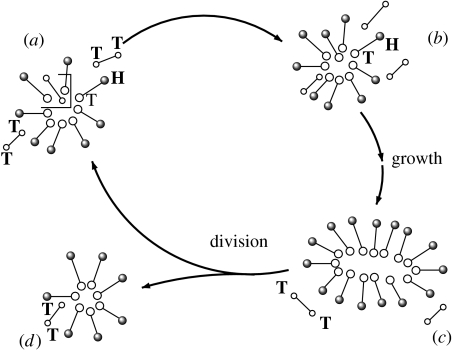Figure 1.
The basic model of nanocell replication explored in this paper. Here small-sized micelles are formed by amphiphiles (indicated as H–T connected pairs of balls). These amphiphiles have a hydrophilic head (H) and a hydrophobic tail (T). Precursor molecules are also shown as two connected, smaller open balls, both of hydrophobic character. Under the presence of catalytically active amphiphiles, precursors are transformed into additional amphiphiles. Incorporation of many such building blocks allows the nanocell to grow in size. When a critical size has been reached, the nanocell looses its stability and divides into two smaller aggregates thereby closing the replication cycle.

